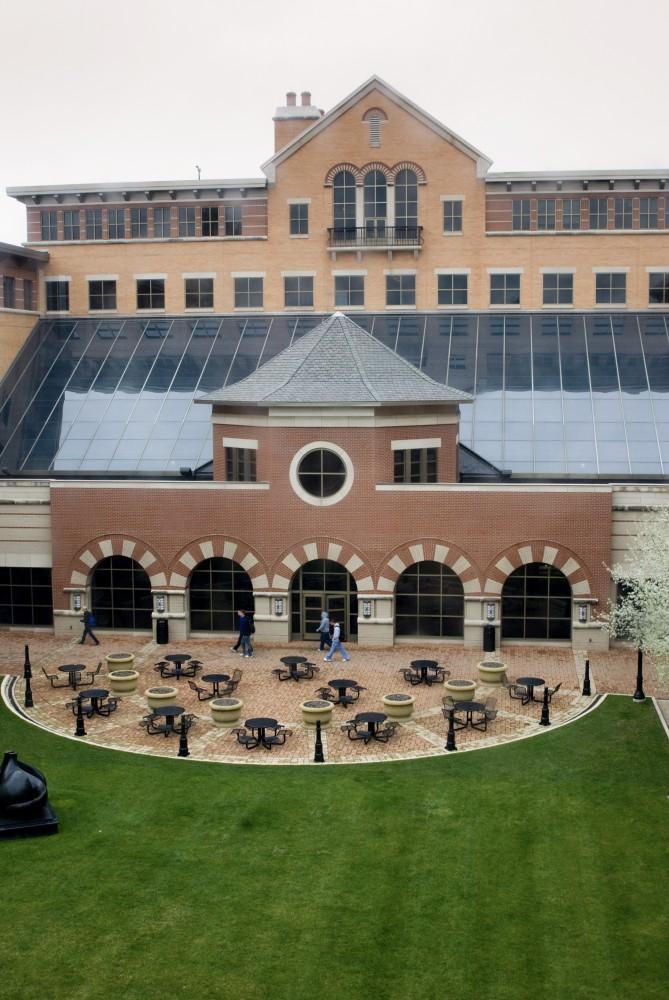Pew Campus increases presence, visibility of GVSU

GVL Archive / Andrew Mills The Richard M. DeVos Center located on the Grand Valley State University Pew Campus.
Oct 7, 2010
Grand Valley State University’s Allendale Campus is not the sole reason for the university’s success. The Pew Campus in downtown Grand Rapids has had a large impact since the opening of its first building, the Eberhard Center, in 1988.
It was then-President Arend Lubbers who first oversaw the expansion. In a recent interview he summarized what he considered at the time of growth. “Allendale is 12 miles west of downtown Grand Rapids,” he said. “It’s not seen by a lot of people. If you build downtown on the Grand River you, in a sense, are building a presence and when that building, the Eberhard Center, was built, thousands and thousands of more people saw (GVSU).”
In 1987, Steelcase Inc. donated an industrial building and large parcel of land near the Eberhard Center to GVSU. Lubbers then appointed a task force to study the role of the new downtown campus and its relationship to the main campus in Allendale. The group’s recommendations had far-ranging effects on the development of the university during the next two decades.
Roles were thus defined for each campus. Allendale served as a primarily residential campus focused on undergraduate education, while the Grand Rapids campus focused on professional and graduate work.
Perhaps the most significant recommendation adopted from the group’s work was the plan to make the two campuses “one integrated institution.” Matt McLogan, GVSU’s vice president of University Relations, said this quality separates GVSU from similar schools.
“President Lubbers wanted to have a unified administration that operates as one,” he said. “We believe this is more effective for the students and lowers expenses for the university.”
McLogan went on to list the many ways the Grand Rapids location benefits students.
“We have some 11,000 students spending either part or all of their time down there,” he said. “It was set up to be located in the city with the urban feel. Programs located downtown are some of them that were believed to have the most to gain from this placement such as: business, social work, education, health professions and engineering.”
GVSU’s Master of Social Work program, established in 1980, was accredited in 1985. The School of Criminal Justice arose in 1989 and started offering master’s degrees in 1997.
The introduction of a graduate program in nursing in 1983 marked an era of exponential growth in the health sciences. By 1998, the growth of the School of Health Sciences resulted in restructuring it with the Department of Physical Education, setting the stage for the College of Health Professions that would blossom on “Health Hill” in Grand Rapids in 2001.
The Seidman College of Business allowed both professional and graduate education to become an integral part of GVSU. In the summer of 2000, the Seidman School of Business moved into its new home at the DeVos Center, a $50 million facility that also houses the international trade institute and other GVSU graduate programs. Connections with both the local and international business communities are enhanced by this facility. By 2008, it was included in lists of the best business schools in the country.
At the memorial service L. William Seidman in 2009, President Thomas Haas announced launched efforts to construct a new building for the Seidman College of Business.
The new building, opening in 2013, will expand room for business students while opening up space for other programs in need of additional facilities.
To learn more about the Pew Campus and the programs offered at this location, go to www.gvsu.edu/pewcampus.






















